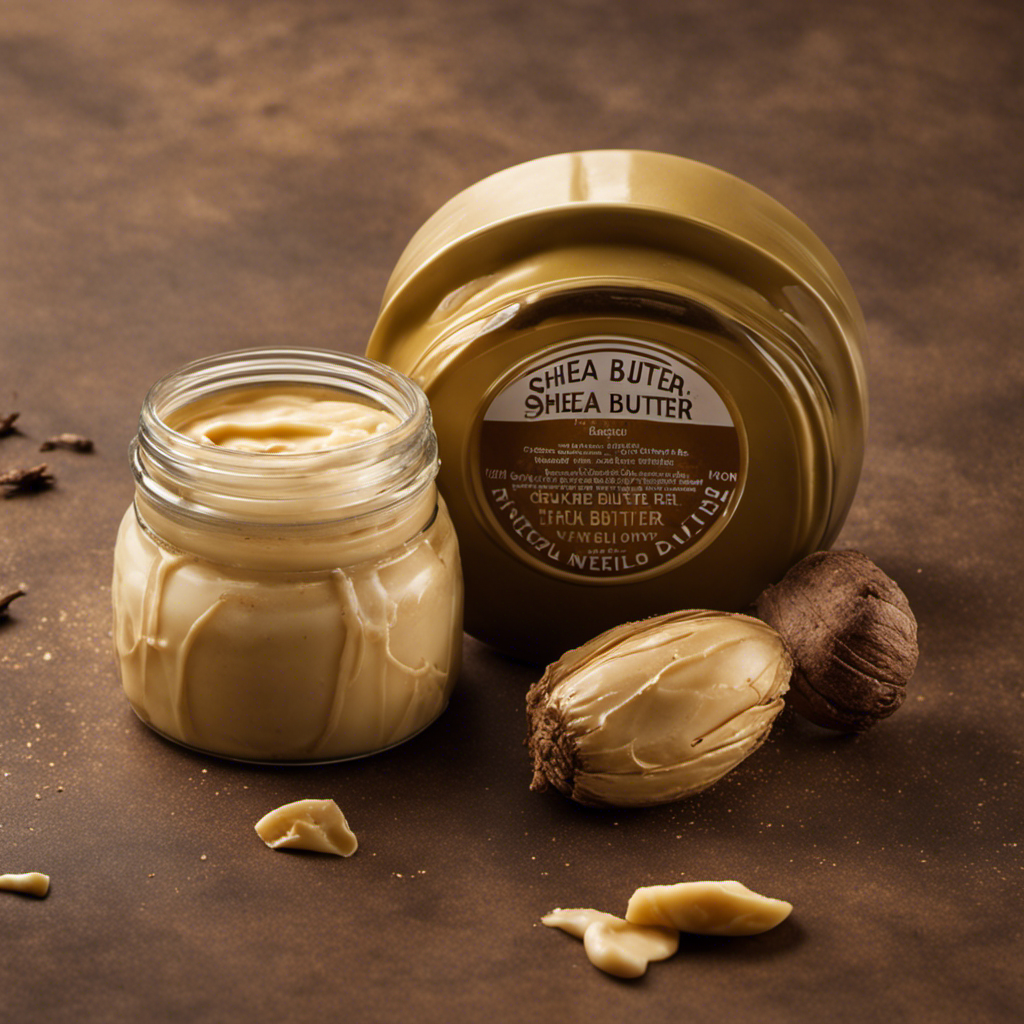Nutritional Information
How Many Calories in 1 Tsp of Butter: A Comprehensive Guide
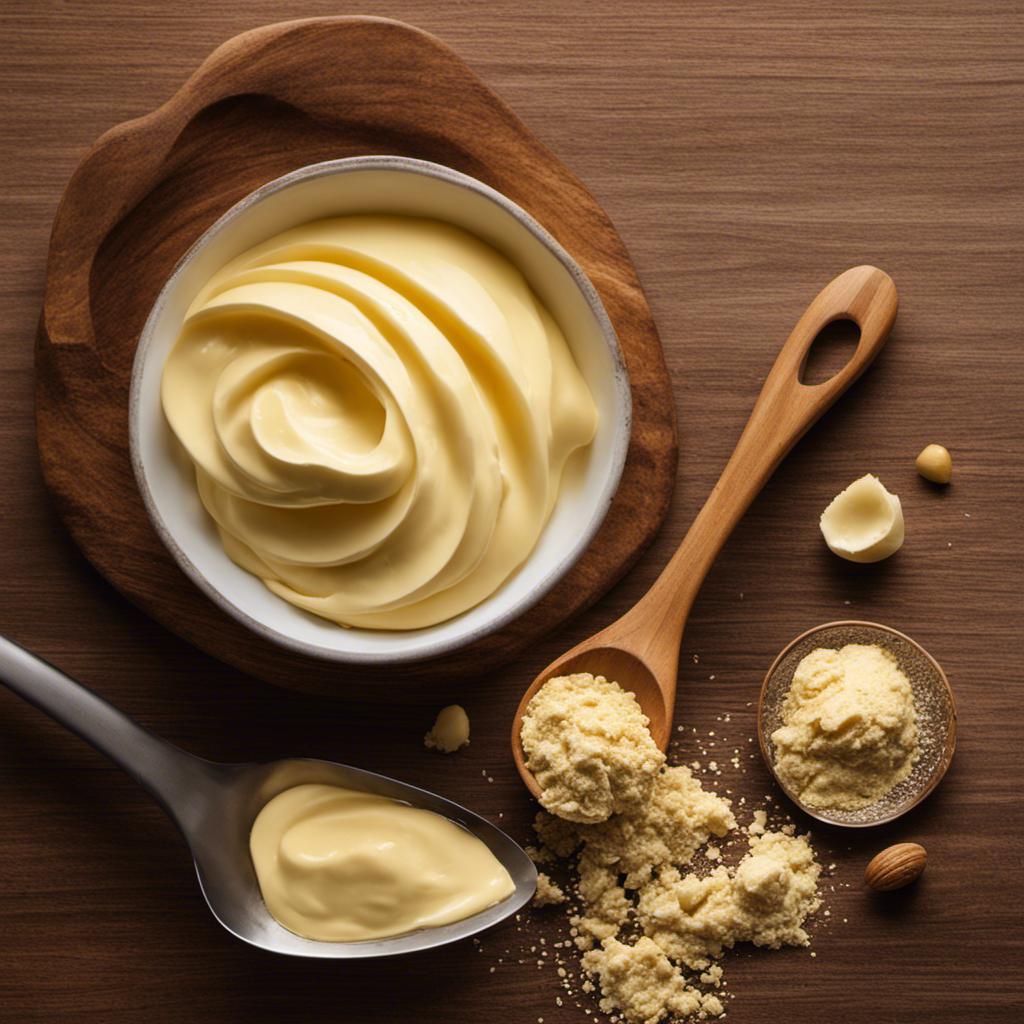
Were you aware that just one teaspoon of butter can contain a surprising amount of calories? It could actually be more than you realize.
As someone who is conscious of their health and wants to make informed choices, understanding the caloric content of butter is crucial. In this article, I will break down the nutritional value of butter, compare it to other fats, and discuss its impact on weight management.
By the end, you’ll have a better understanding of how to moderate your butter consumption without sacrificing flavor.
Key Takeaways
- 1 teaspoon of butter contains about 34 calories.
- Butter should be used in moderation due to its high calorie content.
- Portion control is important for weight management and overall well-being.
- Choosing healthier alternatives to butter, such as avocado or olive oil, can help maintain a balanced diet and enjoy the taste of butter while reducing saturated fat intake.
Butter and Caloric Content
You should know that there are about 34 calories in 1 tsp of butter.
When it comes to managing our calorie intake, it’s important to be mindful of portion sizes. While butter can add richness and flavor to our meals, it is also high in calories. Therefore, it’s essential to use it in moderation.
If you’re looking to reduce your calorie intake, there are butter substitutes available that can be used as alternatives. These substitutes are often lower in calories and can still provide a similar taste and texture. Some popular butter substitutes include margarine, vegetable oil spreads, and olive oil.
It’s always a good idea to check the nutritional information on the packaging to make informed choices about portion sizes and butter substitutes.
Understanding Serving Sizes
When it comes to maintaining a healthy diet, portion control is of utmost importance. Understanding the appropriate serving sizes for different foods can be quite confusing, considering the variations in labels and portion recommendations.
In this discussion, we will explore the significance of portion control and delve into the reasons behind the confusion surrounding serving sizes.
Portion Control Importance
The importance of portion control is evident when considering the number of calories in just one teaspoon of butter. It’s astonishing to think that such a small amount can contain around 36 calories. This highlights the need to be mindful of our portion sizes to maintain a healthy weight and overall well-being.
Here are some benefits and strategies of portion control:
-
Weight management: Controlling portion sizes helps prevent overeating and promotes weight loss or maintenance.
-
Nutritional balance: By controlling portion sizes, we can ensure a balanced intake of all essential nutrients.
-
Blood sugar control: Proper portion control can help regulate blood sugar levels, especially for individuals with diabetes.
-
Digestive health: Eating smaller portions can aid digestion and prevent discomfort or indigestion.
-
Mindful eating: Portion control encourages us to be more aware of what and how much we are consuming, leading to a healthier relationship with food.
Serving Size Confusion
Serving size confusion can arise when we don’t pay attention to the recommended portions on food labels. It’s important to understand that portion size and measuring accuracy play a significant role in our overall health and well-being.
Many people tend to underestimate the amount they are consuming, leading to overeating and weight gain. On the other hand, some may overestimate, leading to unnecessary calorie restrictions and nutrient deficiencies.
To avoid this confusion, it is crucial to use measuring tools like measuring cups or a food scale to accurately portion our meals. By doing so, we can make informed choices about our food intake and maintain a balanced diet.
Now, let’s break down the nutritional value of different food items to gain a better understanding of their impact on our health.
Breaking Down the Nutritional Value
To understand the nutritional value of butter, it’s important to break down its calorie content. In moderation, butter can provide several benefits to our diet. Here’s a breakdown of the nutrition in butter:
-
Calories: One teaspoon of butter contains approximately 34 calories.
-
Fat: Butter is high in saturated fat, which should be consumed in moderation. It also contains small amounts of monounsaturated and polyunsaturated fats.
-
Vitamins: Butter is a good source of vitamin A, which is essential for eye health and immune function.
-
Minerals: It contains trace amounts of calcium, phosphorus, and potassium.
-
Cholesterol: Butter is high in cholesterol, so it’s important to limit intake if you have existing heart conditions.
While butter can be enjoyed in moderation, it’s essential to balance its consumption with a healthy and varied diet.
Comparing Butter to Other Fats
When it comes to comparing butter to other fats, one common contender is margarine. Many people wonder which is healthier for their heart.
While both butter and margarine contain fats, they differ in their composition and impact on heart health. Butter is a natural product made from milk fat, while margarine is a processed product made from vegetable oils.
Butter contains saturated fats, which can raise LDL (bad) cholesterol levels. On the other hand, margarine often contains trans fats, which are even worse for heart health.
To make a heart-healthy choice, it is recommended to opt for spreads that are low in saturated and trans fats, such as olive oil or avocado spreads.
Transitioning to the next subtopic, let’s explore the relationship between butter and weight management.
Butter and Weight Management
When it comes to weight management, it’s important to consider the potential link between butter consumption and obesity. Numerous studies have shown that high intake of saturated fats, like those found in butter, can contribute to weight gain and an increased risk of obesity.
However, there are also healthy butter alternatives available that can help individuals maintain a balanced diet while still enjoying the rich and creamy taste of butter.
Butter and Obesity Link
The butter and obesity link has been a topic of discussion among health experts. While butter consumption has long been associated with heart disease and high cholesterol levels, the relationship between butter and obesity is a complex one. Here are some key points to consider:
- Studies have shown that a high intake of saturated fats, such as those found in butter, can contribute to weight gain and obesity.
- Butter is high in calories and low in nutrients, making it easy to overconsume and contribute to weight gain.
- The saturated fats in butter can increase levels of LDL cholesterol, also known as ‘bad’ cholesterol, which is a risk factor for heart disease.
However, it’s important to note that overall dietary patterns and lifestyle factors play a significant role in obesity, and butter alone is not solely responsible.
- Moderation is key when it comes to butter consumption, and opting for healthier alternatives, such as olive oil or avocado, can be beneficial for heart health and weight management.
Healthy Butter Alternatives
Reducing butter intake can have numerous benefits for our health. Butter adds flavor to our favorite dishes, but it is high in saturated fat, which can contribute to various health issues like heart disease. Therefore, finding healthy butter substitutes can be a great way to cut back on our butter consumption.
There are several alternatives to butter that can provide similar taste and texture while being lower in saturated fat. For example, olive oil is a heart-healthy option that contains monounsaturated fats, which can help lower cholesterol levels. Avocado can also be used as a butter substitute as it offers a creamy texture and is rich in healthy fats.
Butter in Different Culinary Applications
You’ll notice that butter can be used in various culinary applications, each offering a unique flavor and texture. Here are some of the ways you can incorporate butter into your cooking:
-
Baking: Butter is a staple in baking, adding richness and moisture to cakes, cookies, and pastries.
-
Sauteing: Butter is perfect for sauteing vegetables, giving them a delicious, caramelized flavor.
-
Pan-frying: Butter adds a rich and nutty taste when used for pan-frying meats or fish.
-
Toasting: Spread some butter on your toast for a classic and comforting breakfast.
-
Sauces: Butter is often used to create rich and creamy sauces, like beurre blanc or hollandaise.
While there are butter substitutes available, it’s important to note that they may not provide the same flavor and texture as real butter. However, if you’re looking for a healthier alternative, you can try using olive oil or coconut oil in some recipes.
Tips for Moderating Butter Consumption
Now that we’ve discussed the various culinary applications of butter, let’s explore some tips for moderating our consumption of this rich ingredient. Portion control is key when it comes to using butter in our meals. Instead of slathering it on liberally, we can measure out smaller amounts to ensure we’re not overdoing it.
In addition to portion control, we can also consider incorporating healthier fats into our diet. While butter does contain saturated fats, there are other options available that provide essential nutrients. For instance, avocados and olive oil are both excellent sources of healthy fats that can be used as alternatives to butter in certain recipes.
To help you visualize the nutritional content of different fats, I’ve created a handy table:
| Fat Source | Saturated Fat (g) | Monounsaturated Fat (g) | Polyunsaturated Fat (g) |
|---|---|---|---|
| Butter | 7 | 3.3 | 0.5 |
| Avocado | 2.1 | 9.8 | 1.8 |
| Olive Oil | 1.9 | 9.9 | 1.4 |
Frequently Asked Questions
Can Butter Be Substituted With Other Fats in Recipes?
When substituting butter in recipes, there are several healthier options available. For those following a vegan diet, plant-based spreads or oils can be used. It’s important to consider the flavor and texture these alternatives bring to the dish.
How Does the Caloric Content of Butter Differ Based on Its Brand or Type?
Brand comparison and types of butter can affect the caloric content. It’s important to consider the nutritional information on the packaging. Different brands and types may vary in calories, so always check the label.
Does Butter Provide Any Nutritional Benefits Apart From Its Caloric Content?
Butter provides nutritional value in the form of healthy fats. While it does contain calories, it also offers essential vitamins and minerals. Incorporating moderate amounts of butter into a balanced diet can contribute to overall health.
Are There Any Health Risks Associated With Consuming Butter in Excessive Amounts?
There may be health risks associated with consuming excessive amounts of butter. It is important to consider the recommended intake and balance it with other sources of nutrition for overall health.
Can Butter Consumption Have Any Impact on Cholesterol Levels?
Butter consumption can impact cholesterol levels, as it is high in saturated fats. This is relevant to the ongoing butter vs. margarine debate and the overall impact of butter on heart health.
Conclusion
In conclusion, it’s important to be mindful of our butter consumption. While butter can add rich flavor to our favorite dishes, it’s crucial to remember that it also packs a caloric punch.
Just one teaspoon of butter can contain around 36 calories, so moderation is key. By understanding serving sizes and comparing butter to other fats, we can make informed choices about our dietary intake.
So, let’s embrace the butter in our culinary endeavors, but let’s do so in a balanced and mindful way.
Sunny’s articles radiate enthusiasm, much like her sunny disposition. As our resident “Butter Geek”, she delves deep into the latest butter trends, ensuring our readers are always in the know. Beyond her writing, Sunny’s passion lies in exploring vegan butter alternatives and hosting butter-tasting soirées.
Nutritional Information
How Many Carbs in Butter-Cooked Cabbage: A Guide

I have always been intrigued by how different cooking techniques can impact the nutritional value of my favorite dishes. This is why I chose to explore the combination of cabbage and butter.
In this article, we’ll explore the question: How many carbs are in cabbage cooked in butter? By analyzing the nutritional content of cabbage, the impact of cooking on its carb count, and the role of butter, we’ll uncover the answer and help you make informed choices about your meals.
So, let’s get cooking, and let’s get learning!
Key Takeaways
- Cabbage is low in carbs and high in nutrients, making it suitable for low carb diets.
- Different cooking methods can affect the nutritional content of cabbage, with boiling leading to nutrient loss and steaming or sautéing helping to retain more vitamins and minerals.
- Cabbage prepared with butter contains a slight increase in carbohydrates, with one cup of cooked cabbage containing about 8 grams of carbs and adding a tablespoon of butter contributing an additional 0.1 grams of carbs.
- Despite the slight increase in carbs, cabbage cooked in butter still offers health benefits such as vitamins, minerals, fiber, and powerful antioxidants.
Nutritional Content of Cabbage
You’ll be pleased to know that cabbage is low in carbs and high in nutrients. It is a versatile vegetable that offers numerous health benefits.
Cabbage is packed with vitamins C and K, which support a strong immune system and healthy bones. It is also a good source of fiber, which aids in digestion and helps maintain a healthy weight.
When it comes to cooking cabbage, different methods can affect its nutritional content. Boiling cabbage can lead to some nutrient loss, while steaming or sautéing it helps retain more of its vitamins and minerals.
Overall, cabbage is a nutritious choice that can be enjoyed in a variety of dishes, providing both flavor and health benefits.
Carbohydrate Content of Cabbage
There’s a significant amount of carbohydrates in cabbage when it’s prepared with butter. However, cabbage still offers numerous health benefits that make it a worthwhile addition to your diet.
- Cabbage is packed with vitamins and minerals, including vitamin C, vitamin K, and folate.
- It is also a great source of fiber, which aids in digestion and helps keep you feeling full.
- Cabbage contains powerful antioxidants that can help reduce inflammation and protect against chronic diseases.
If you’re looking for low carb alternatives to cabbage, there are several options to consider:
- Cauliflower: With just 5 grams of carbs per cup, cauliflower is a versatile and nutritious alternative to cabbage.
- Zucchini: Zucchini is low in carbs and can be used as a substitute in recipes that call for cabbage.
- Broccoli: Broccoli is another low carb option that is packed with nutrients and can be used in a variety of dishes.
Overall, while cabbage does contain carbohydrates, it is still a healthy choice. However, if you prefer low carb alternatives, cauliflower, zucchini, and broccoli are great options to consider.
Impact of Cooking on Cabbage’s Carb Count
When you cook cabbage, it undergoes a chemical change that can affect its carbohydrate content. The cooking process can break down some of the complex carbohydrates found in raw cabbage, resulting in a slight decrease in the overall carb count. However, the impact may not be significant enough to drastically alter the nutritional value of cabbage.
To preserve cabbage’s nutritional value, it is important to choose cooking methods that minimize nutrient loss. Steaming or stir-frying cabbage can help retain more of its vitamins and minerals compared to boiling.
Additionally, there are alternative ways to prepare cabbage without using butter. You can try roasting cabbage with olive oil and spices, or sautéing it in vegetable broth for a healthier and lower-calorie option.
Butter and Carb Content in Cabbage
Adding butter to cooked cabbage can significantly increase its calorie content. However, when it comes to weight loss and the benefits of cooking cabbage with butter, there are a few things to consider:
-
Butter adds flavor: The rich and creamy taste of butter can make cooked cabbage more enjoyable to eat, encouraging you to include it in your meals.
-
Increased satiety: Adding butter to cabbage can make the dish more satisfying and filling, helping to curb hunger and prevent overeating.
-
Nutrient absorption: Some vitamins and minerals in cabbage, such as vitamin A and K, are fat-soluble, meaning they are better absorbed by the body when consumed with a source of fat like butter.
By understanding the potential benefits of cooking cabbage with butter, you can make informed choices about your diet.
Now, let’s explore how to calculate the carb content in cooked cabbage with butter.
Calculating Carbs in Cooked Cabbage With Butter
Calculating the carb content in cooked cabbage with butter is a simple process. When it comes to low carb cabbage recipes, it’s important to know the nutritional value of the ingredients.
Cabbage itself is a low carb vegetable, making it a great choice for those following a low carb diet. However, when you add butter to cooked cabbage, it does increase the carb content slightly. According to the USDA, one cup of cooked cabbage contains about 8 grams of carbs. Adding a tablespoon of butter to the cooked cabbage adds an additional 0.1 grams of carbs.
Despite the slight increase in carbs, the health benefits of cabbage, such as being a good source of vitamins and minerals, make it a nutritious choice for any meal.
Frequently Asked Questions
Can I Use a Different Type of Fat or Oil Instead of Butter When Cooking Cabbage?
Yes, you can use different types of fats or oils instead of butter when cooking cabbage. Some options include olive oil, coconut oil, or avocado oil. Each fat has its own health benefits.
How Does the Carb Content of Cooked Cabbage Compare to Raw Cabbage?
Cooking cabbage can affect its carb content compared to raw cabbage. The process of cooking can break down some of the carbohydrates, potentially reducing the overall carb content.
Can I Add Other Vegetables to the Dish Without Significantly Increasing the Carb Count?
Adding low carb vegetables to cabbage cooked in butter can be a great way to enhance flavor and texture without significantly increasing the carb count. To further reduce carb content, consider steaming or roasting the cabbage instead of cooking it in butter.
Is It Possible to Reduce the Carb Content of Cabbage by Cooking It in a Specific Way?
Reducing carb content of cabbage by cooking methods is possible. Cooking cabbage in butter adds richness and flavor, but doesn’t significantly increase carb count. It’s a delicious and nutritious way to enjoy cabbage.
How Does the Carb Content of Cabbage Cooked in Butter Compare to Other Cooking Methods?
Cabbage cooked in butter offers nutritional benefits like vitamins and minerals. It can be a delicious addition to a low carb diet. Incorporate it into meals by sautéing or roasting it for a flavorful and healthy dish.
Conclusion
In conclusion, it’s truly astonishing how many carbs can hide in the innocent-looking cabbage when cooked in butter. Who would have thought that this humble vegetable could be so sneaky?
But fear not, for knowledge is power. By understanding the nutritional content of cabbage and the impact of cooking on its carb count, we can make informed choices about our meals.
So next time you indulge in some buttery cabbage, remember to savor every deliciously deceptive bite.
Sunny’s articles radiate enthusiasm, much like her sunny disposition. As our resident “Butter Geek”, she delves deep into the latest butter trends, ensuring our readers are always in the know. Beyond her writing, Sunny’s passion lies in exploring vegan butter alternatives and hosting butter-tasting soirées.
Nutritional Information
How Many Carbs Are in Butter Popcorn? A Detailed Guide
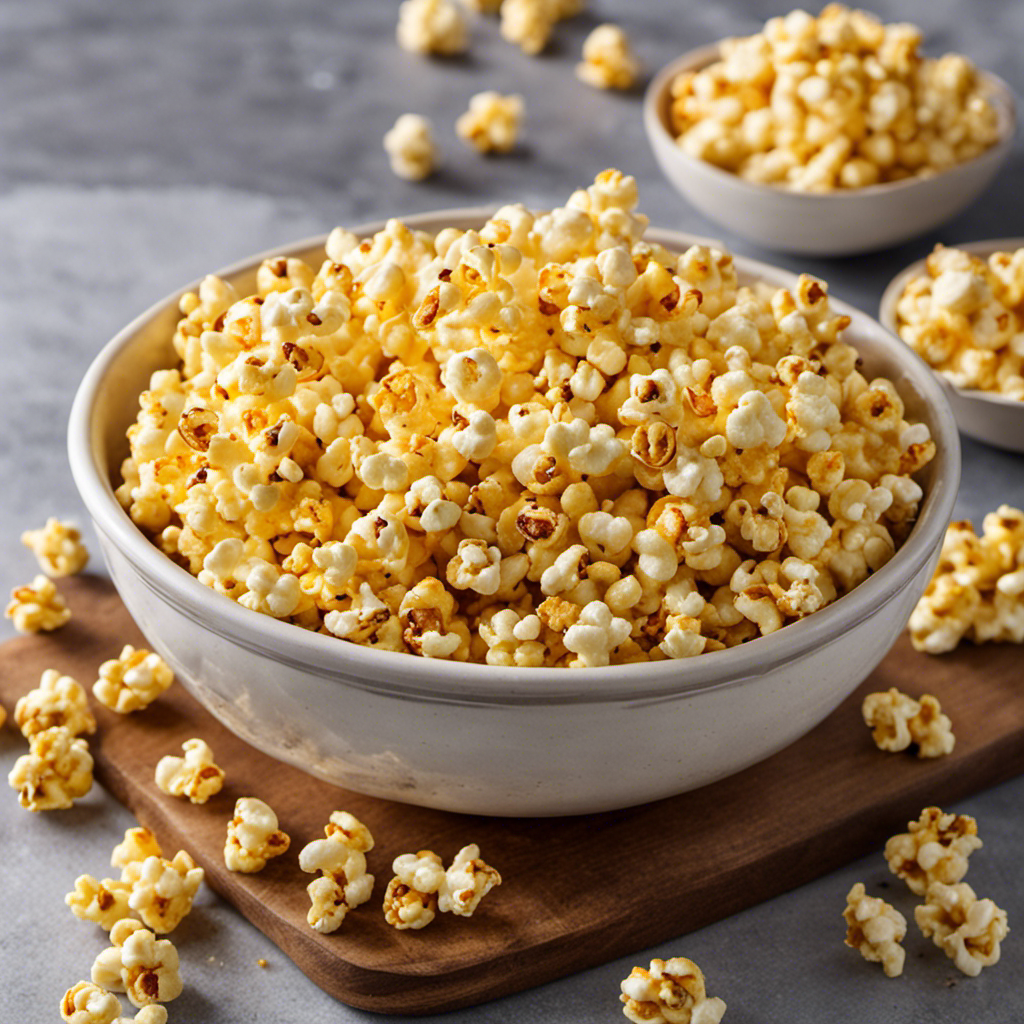
As someone who loves popcorn, I am constantly interested in knowing the nutritional content of my go-to snack. Therefore, you can imagine my shock when I realized the high amount of carbs present in butter popcorn!
In this article, we’ll explore the carb content of butter-infused popcorn and help you understand what you’re really consuming. Whether you’re watching your carb intake or simply curious, get ready to dive into the buttery world of popcorn and find out just how many carbs are in that tempting bowl.
Key Takeaways
- Popcorn is a whole grain and provides fiber and essential nutrients.
- On average, a 1-ounce serving of butter popcorn contains about 22-25 grams of carbohydrates.
- Enjoying butter popcorn in moderation and choosing lighter toppings can help manage carb intake.
- Opting for healthier popcorn alternatives, such as air-popped popcorn, can reduce carb content.
The Nutritional Value of Butter Popcorn
I love butter popcorn, but I’m curious about its nutritional value. While butter popcorn may not be the healthiest snack option, it does have some benefits.
First, popcorn is a whole grain, which means it contains fiber and essential nutrients. Additionally, it’s low in calories compared to other snack options.
To make butter popcorn healthier at home, there are a few tips you can follow. First, opt for air-popped popcorn instead of using oil. This reduces the calorie and fat content. Second, instead of using butter, try using a light spray of olive oil and sprinkle some nutritional yeast for a cheesy flavor. Lastly, avoid adding excessive salt or other seasonings high in sodium.
Now, let’s dive into the carbohydrate content in butter popcorn.
Carbohydrate Content in Butter Popcorn
I’m amazed by the amount of carbohydrates found in the delicious buttery popcorn. It’s hard to resist the temptation of this popular movie snack, but it’s important to be mindful of its carb count, especially for those following a low-carb diet. The exact amount of carbs in butter popcorn can vary depending on the brand and serving size, but on average, a 1-ounce serving contains about 22 grams of carbohydrates. While this may seem high, popcorn also offers some health benefits. It is a whole grain, providing fiber and antioxidants. Additionally, it is a low-calorie snack that can help satisfy hunger. Just remember to enjoy it in moderation and choose lighter toppings to keep the carb count in check.
| Nutrient | Amount per 1 oz serving |
|---|---|
| Carbohydrates | 22g |
| Fiber | 4g |
| Protein | 3g |
Counting Carbs in Butter-Flavored Popcorn
Counting the carbohydrates in the butter-flavored movie snack can be a helpful way to make informed choices about my carb intake.
When it comes to butter popcorn, it’s important to be aware of the carb content, especially if you’re following a low-carb or keto diet. A typical serving of butter popcorn contains around 30 grams of carbohydrates.
To manage my carb intake, I try to limit my portion size and opt for healthier popcorn alternatives. Air-popped popcorn is a great option as it’s lower in carbs and calories compared to butter popcorn.
I also enjoy sprinkling nutritional yeast or spices like cinnamon or chili powder on top for added flavor.
Understanding the Carb Content in Butter Popcorn
Knowing the nutritional information of this movie snack can help me make informed choices about my carb intake. When exploring popcorn flavors, it’s important to analyze the fat content as well.
Butter popcorn is a popular choice, but it’s crucial to understand its carb content. While popcorn itself is a whole grain and a good source of fiber, the butter flavoring can increase the fat and carbohydrate content. On average, a one-ounce serving of butter popcorn contains about 25 grams of carbohydrates, with 3 grams of dietary fiber.
It’s worth noting that the fat content can vary depending on the brand and preparation method. Therefore, if I’m watching my carb intake, it’s essential to enjoy butter popcorn in moderation and consider other flavor options that may have lower carb and fat content.
Carbs in Butter-Infused Popcorn: What You Need to Know
When indulging in butter-infused popcorn, it’s important to be aware of the carb content and its potential impact on my diet. While popcorn is generally considered a healthy snack, it’s essential to understand how different flavors and preparations can affect its nutritional value.
Popcorn is a whole grain that’s low in calories and high in fiber, making it a great option for those watching their weight or managing their blood sugar levels. Additionally, popcorn contains antioxidants that can help reduce inflammation and improve overall heart health.
However, when popcorn is butter-infused, the carb content increases significantly. It’s crucial to choose wisely and moderate portions to ensure that the carb content fits within your dietary needs. By opting for healthier toppings or enjoying plain popcorn, you can still enjoy the benefits of eating popcorn while keeping your carb intake in check.
Frequently Asked Questions
Can Popcorn Be Considered a Healthy Snack Option?
Popcorn can definitely be considered a healthy snack option. Air popped popcorn has numerous nutritional benefits. It’s low in calories, high in fiber, and contains vitamins and minerals.
As for flavoring, there are alternatives to butter that can be used. For example, you can try using herbs and spices like garlic powder or nutritional yeast for a savory taste, or cinnamon and honey for a sweet flavor. These options can enhance the taste without adding unnecessary carbs or unhealthy fats.
Is There a Difference in Carbohydrate Content Between Butter-Flavored and Butter-Infused Popcorn?
Well, let me tell you, there’s indeed a difference in the carbohydrate content between butter-flavored and butter-infused popcorn.
When comparing butter popcorn alternatives, it’s important to consider the nutritional differences between butter and oil-based popcorn flavorings.
While butter-flavored popcorn may have a higher carbohydrate content due to added ingredients, butter-infused popcorn tends to have a lower carbohydrate content as it’s made with real butter.
Can Butter Popcorn Be Included in a Low-Carb Diet?
Butter popcorn can be included in a low-carb diet, as long as it’s consumed in moderation. While it does contain some carbohydrates, there are low carb popcorn alternatives available for those who are following a strict low-carb diet.
Popcorn itself is a healthy snack option, as it’s a whole grain and high in fiber. It provides various health benefits, such as improved digestion and lower cholesterol levels.
What Is the Recommended Serving Size for Butter Popcorn?
The recommended serving size for butter popcorn depends on personal dietary needs and goals. It’s important to check the nutritional value of the specific brand or homemade recipe you’re using. When considering the serving size, take into account the number of carbs, fats, and calories in each serving.
It’s always a good idea to consult with a healthcare professional or registered dietitian for personalized advice on portion sizes and incorporating butter popcorn into a low-carb diet.
Are There Any Potential Health Risks Associated With Consuming Butter Popcorn Regularly?
Regular consumption of butter popcorn may pose potential health risks due to its high carbohydrate content. However, it’s important to note that moderation is key.
While butter popcorn may not offer significant health benefits, it does have some nutritional value. It provides a source of energy and contains small amounts of fiber.
To ensure a balanced diet, it’s recommended to consume popcorn in moderation and opt for healthier alternatives when possible.
Conclusion
In conclusion, butter popcorn can be a tasty snack option, but it’s important to be mindful of its carbohydrate content. While the exact number of carbs may vary depending on the brand and serving size, it’s generally a higher-carb choice.
Therefore, if you’re watching your carb intake, it’s wise to enjoy butter popcorn in moderation or opt for lower-carb alternatives. Remember, balance is key when it comes to maintaining a healthy diet.
Diana’s meticulous nature and editorial prowess set the gold standard for our content. With over a decade in the culinary and publishing industries, her guidance ensures that every article perfectly blends information and entertainment. A culinary experimenter, Diana loves whipping up new butter-based concoctions in her kitchen.
Nutritional Information
How Many Calories in Mashed Potatoes With Butter: A Simple Guide
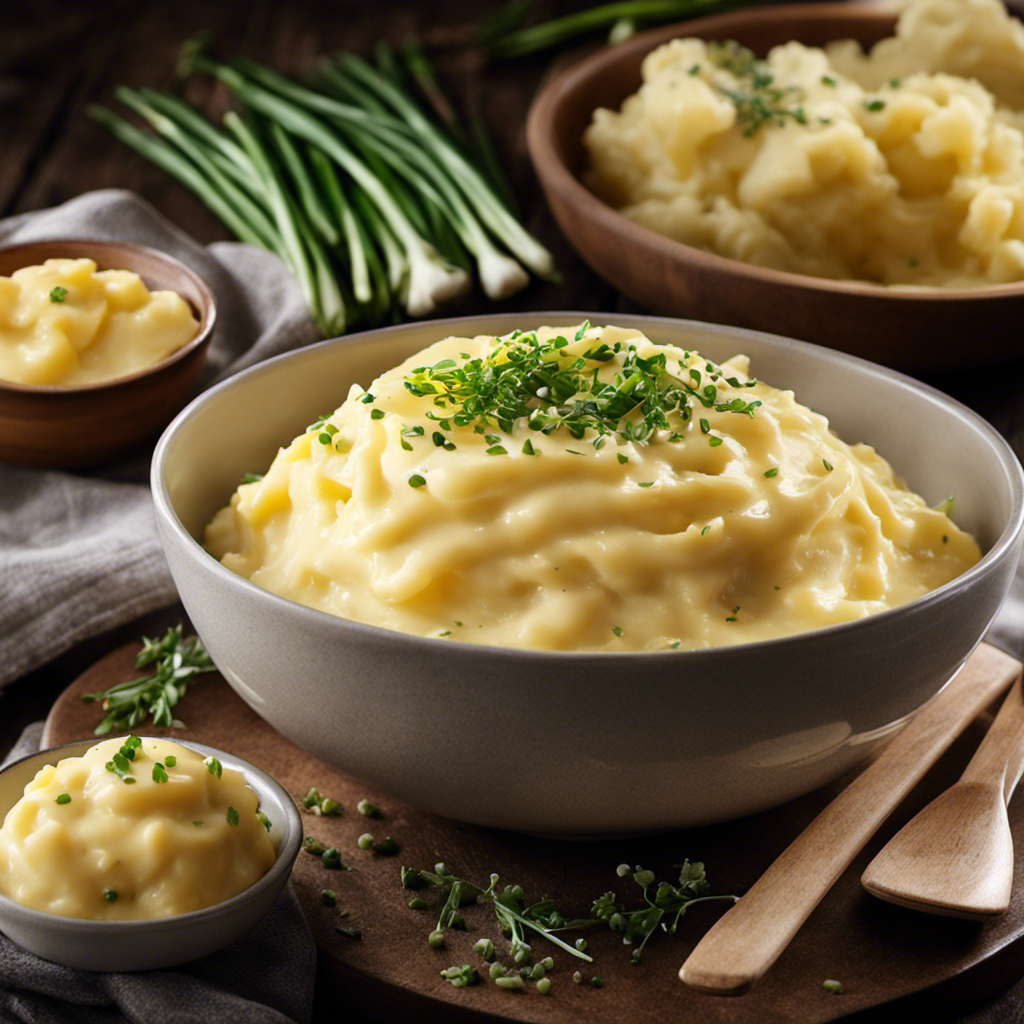
Have you ever thought about how many calories are hiding in that tasty bowl of mashed potatoes with butter? Get ready to be amazed!
In this article, we will delve deep into the nutritional content of mashed potatoes with butter and reveal the calorie count that might surprise you. By understanding the calorie impact of adding butter to your mashed potatoes, you’ll be equipped to make more informed choices about your favorite comfort food.
So, let’s dig in and uncover the truth about those creamy, buttery potatoes!
Key Takeaways
- Mashed potatoes with butter are a good source of vitamins and minerals like vitamin C and potassium.
- Adding butter to mashed potatoes significantly increases the calorie count, with one tablespoon adding approximately 102 calories.
- Butter is high in saturated fat, which can increase cholesterol levels and contribute to heart disease.
- Healthier alternatives to butter, such as Greek yogurt or olive oil, can be considered to reduce the calorie content of mashed potatoes.
Nutritional Content of Mashed Potatoes With Butter
There’s a significant increase in the calorie count when you add butter to mashed potatoes. However, along with the added calories, there are also nutritional benefits to consider.
Mashed potatoes themselves are already a good source of vitamins and minerals, such as vitamin C and potassium. When you add butter, it not only enhances the flavor but also provides essential fatty acids and fat-soluble vitamins like vitamin A and vitamin E.
The nutritional value of mashed potatoes with butter can contribute to a well-balanced diet. It’s important to note that moderation is key, as butter is high in saturated fat. By enjoying mashed potatoes with butter in moderation, you can indulge in the delicious taste while still reaping some health benefits.
Calorie Count for Mashed Potatoes With Butter
When you add butter to mashed potatoes, it increases the calorie count. While butter adds richness and flavor to mashed potatoes, it also adds a significant amount of calories. In fact, just one tablespoon of butter contains approximately 102 calories. If you’re concerned about the calorie content of your mashed potatoes, there are alternative ingredients you can use to create a lower calorie version. For example, substituting Greek yogurt or low-fat sour cream for butter can help reduce the calorie count while still maintaining a creamy texture. Another option is to use chicken or vegetable broth instead of butter for a lighter, yet still flavorful, mashed potato dish. By making these simple substitutions, you can enjoy mashed potatoes with fewer calories while still satisfying your taste buds.
| Ingredient | Calories |
|---|---|
| Butter (1 tablespoon) | 102 |
| Greek Yogurt (1 cup) | 130 |
| Low-Fat Sour Cream (1 cup) | 220 |
| Chicken Broth (1 cup) | 38 |
Understanding the Calorie Content of Mashed Potatoes With Butter
By adding butter to mashed potatoes, you’ll increase the calorie count. However, it’s important to understand the calorie content of this popular dish. Here’s what you need to know:
-
Calorie content comparison: Mashed potatoes without butter typically contain around 120 calories per serving. However, when butter is added, the calorie count can increase significantly. Just one tablespoon of butter adds approximately 100 calories to your mashed potatoes.
-
Health benefits: While mashed potatoes are a good source of vitamin C and potassium, adding butter can impact the health benefits. Butter is high in saturated fat, which can increase cholesterol levels and contribute to heart disease.
-
Moderation is key: If you enjoy mashed potatoes with butter, it’s important to consume them in moderation. Be mindful of portion sizes and balance your meal with other nutritious foods.
-
Alternatives: If you’re looking to reduce the calorie content of mashed potatoes, you can consider using alternatives to butter such as olive oil or Greek yogurt.
Understanding the calorie content of mashed potatoes with butter can help you make informed choices and maintain a balanced diet. Remember to prioritize moderation and consider healthier alternatives.
How to Calculate the Calories in Mashed Potatoes With Butter
To calculate the calories in mashed potatoes with butter, you can use a nutrition calculator or refer to the nutritional information on the packaging. By knowing the quantity of butter used in the recipe, you can estimate the calorie content more accurately. Here is a table showing the approximate calorie count for different amounts of butter added to mashed potatoes:
| Butter Quantity | Calories |
|---|---|
| 1 tablespoon | 102 |
| 2 tablespoons | 204 |
| 3 tablespoons | 306 |
| 4 tablespoons | 408 |
Keep in mind that these values are based on an average butter brand and may vary slightly. If you prefer a healthier option, you can choose low-fat or butter alternatives to reduce the calorie intake. Remember, it’s important to be mindful of portion sizes and the overall balance of your meal to maintain a healthy diet.
Exploring the Calorie Impact of Adding Butter to Mashed Potatoes
If you want to explore the calorie impact of adding butter to your mashed potatoes, there are a few things you should consider. Here’s what you need to know:
-
Calorie Comparison: Butter is a high-calorie ingredient, with about 102 calories per tablespoon. Adding just a few tablespoons of butter to your mashed potatoes can significantly increase the calorie content.
-
Portion Control: Be mindful of how much butter you add to your mashed potatoes. Using less butter or opting for a lower-calorie alternative can help reduce the overall calorie impact.
-
Alternative Toppings: Instead of butter, consider using alternative toppings like Greek yogurt, sour cream, or olive oil. These options can add flavor and creaminess to your mashed potatoes without adding as many calories.
-
Moderation is Key: While butter can enhance the taste of mashed potatoes, it’s important to enjoy it in moderation. Balancing your portion sizes and being mindful of calorie content can help you maintain a healthy diet while still enjoying this delicious side dish.
Conclusion
In conclusion, when it comes to mashed potatoes with butter, the calorie count can be quite concerning. The creamy, buttery goodness adds a significant amount of calories to this beloved dish.
But fear not, dear reader! By understanding the calorie content and calculating the impact, you can make informed choices.
So, next time you indulge in this scrumptious side, be mindful of the calories and consider alternative options. Remember, moderation is key to maintaining a healthy lifestyle!
Diana’s meticulous nature and editorial prowess set the gold standard for our content. With over a decade in the culinary and publishing industries, her guidance ensures that every article perfectly blends information and entertainment. A culinary experimenter, Diana loves whipping up new butter-based concoctions in her kitchen.
-
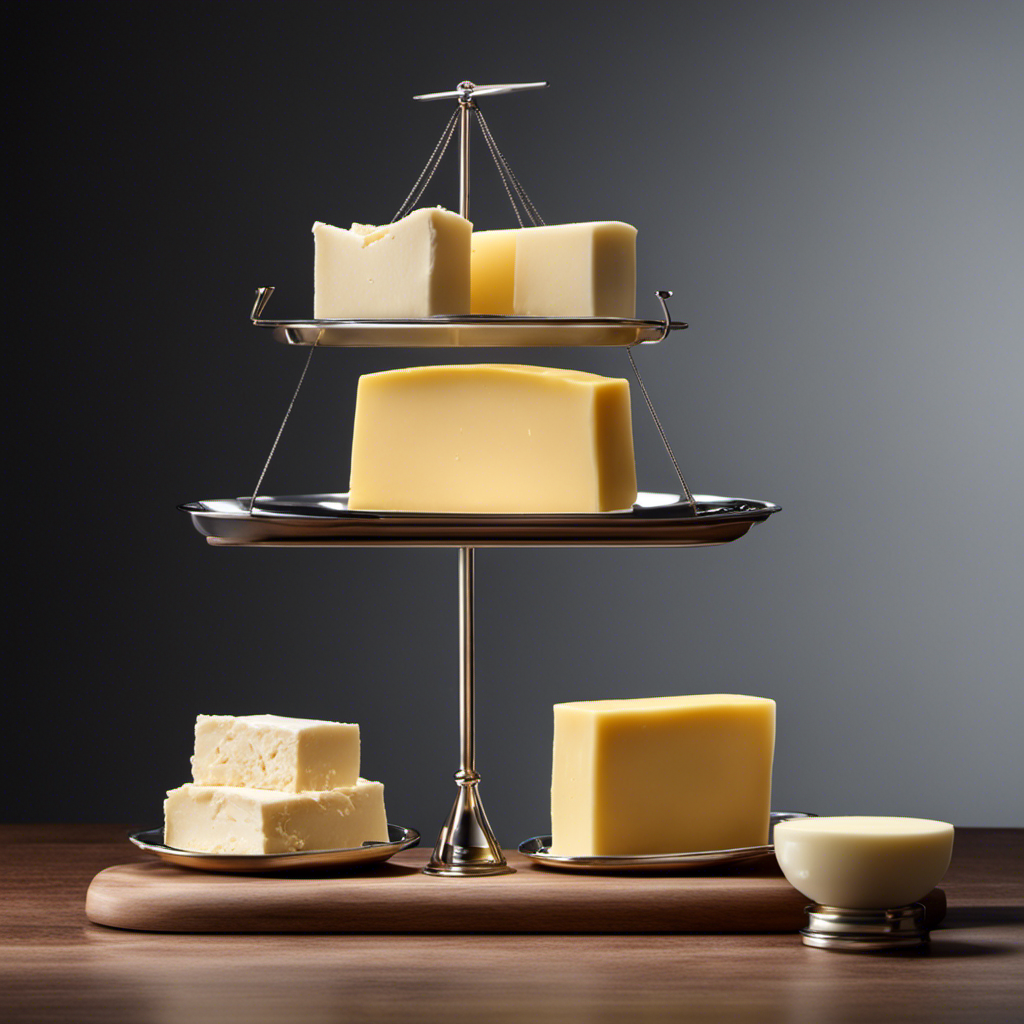
 Recipes & Culinary Uses2 months ago
Recipes & Culinary Uses2 months agoHow Many Sticks of Butter Equals a Pound: A Handy Guide
-

 Shopping Guides1 month ago
Shopping Guides1 month agoWhere to Buy Raw Butter
-

 Recipes & Culinary Uses4 weeks ago
Recipes & Culinary Uses4 weeks agoMake Homemade Butter from Milk at Home
-
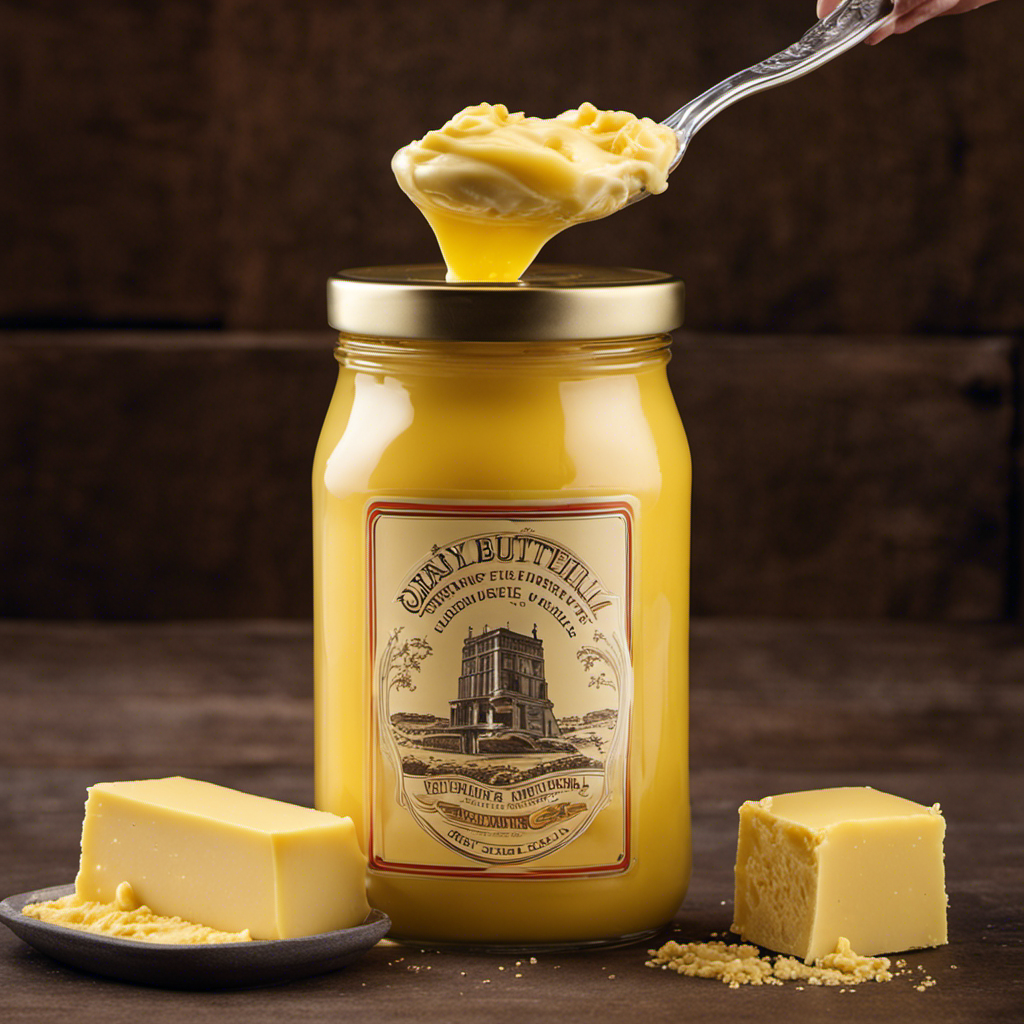
 Recipes & Culinary Uses4 weeks ago
Recipes & Culinary Uses4 weeks agoMake Creamy Butter From Buttermilk
-
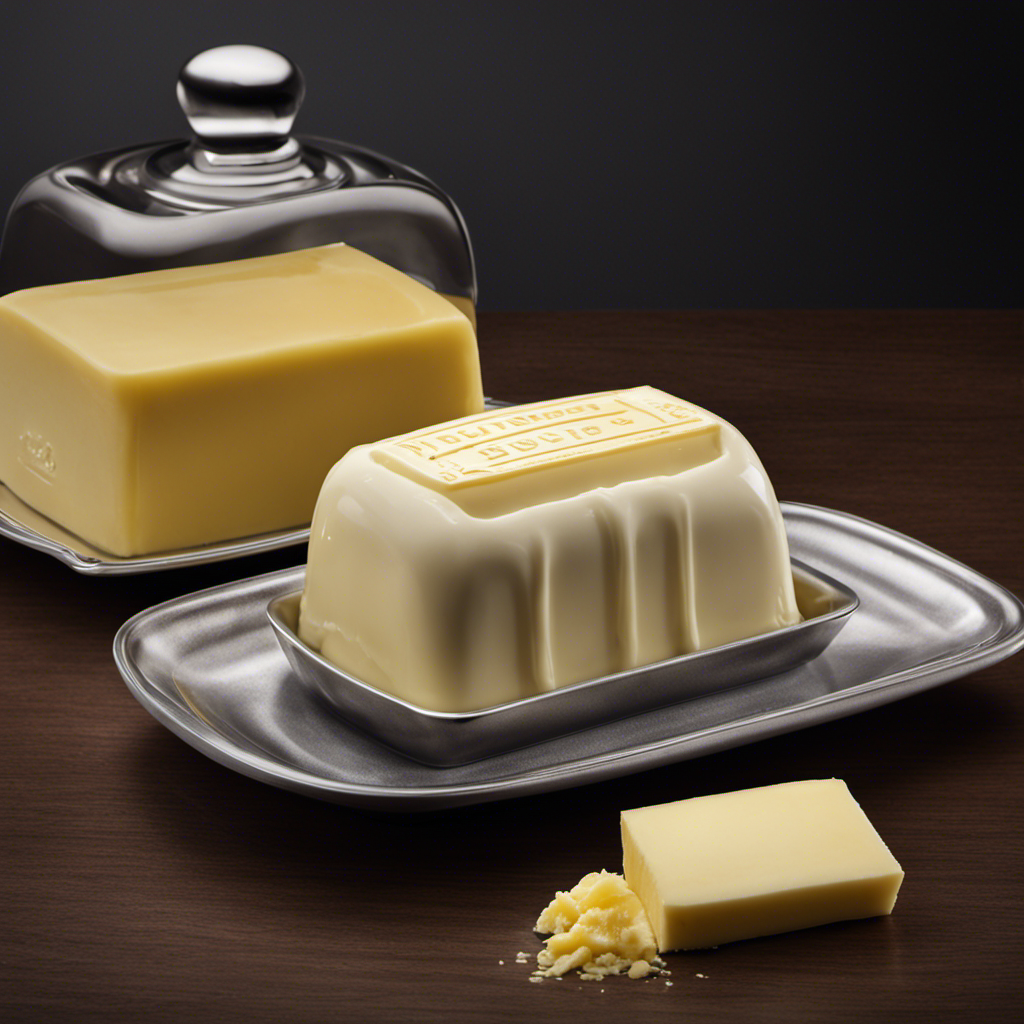
 Butter Tips and Tricks3 months ago
Butter Tips and Tricks3 months agoHow Long Can You Use Butter After the Expiration Date?
-

 Recipes & Culinary Uses2 months ago
Recipes & Culinary Uses2 months agoMake Your Own Homemade Spray Butter
-
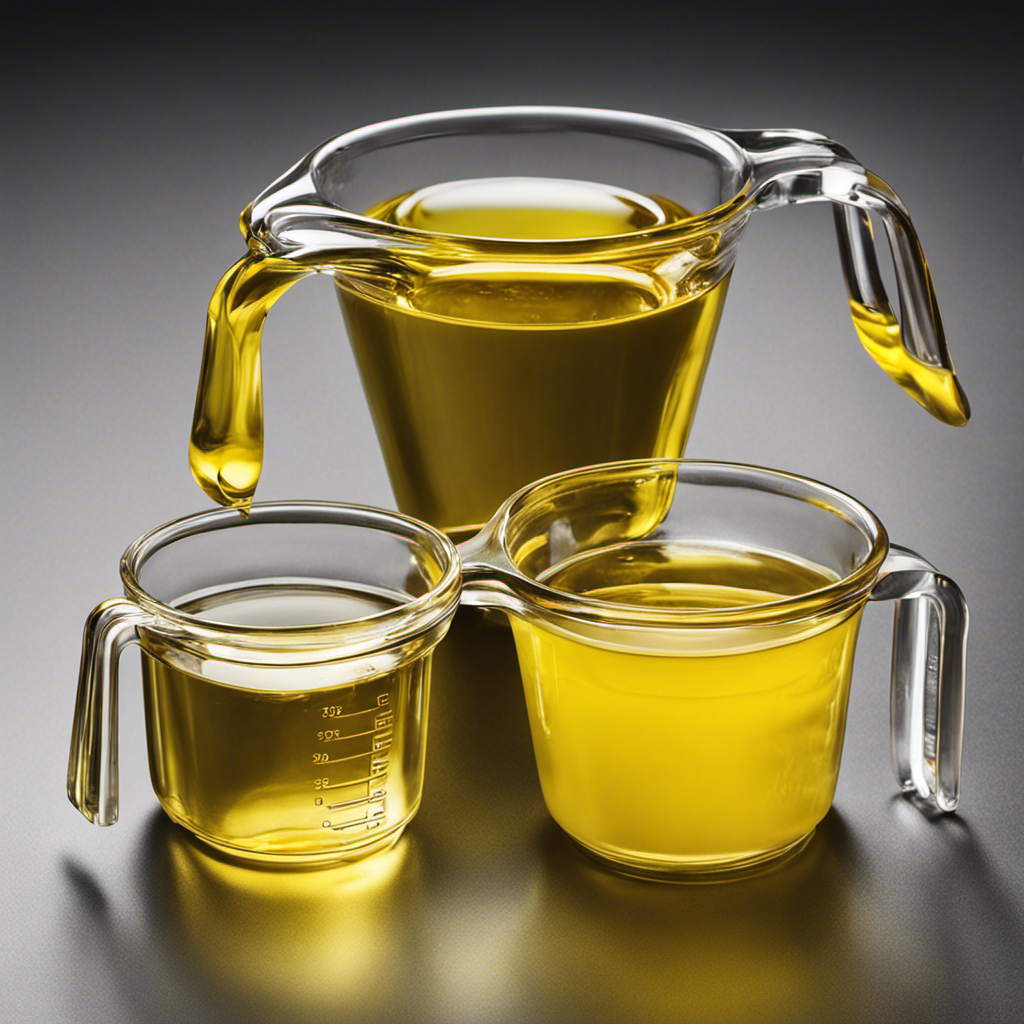
 Butter Tips and Tricks3 months ago
Butter Tips and Tricks3 months agoHow Much Butter to Use Instead of 1/3 Cup Oil
-
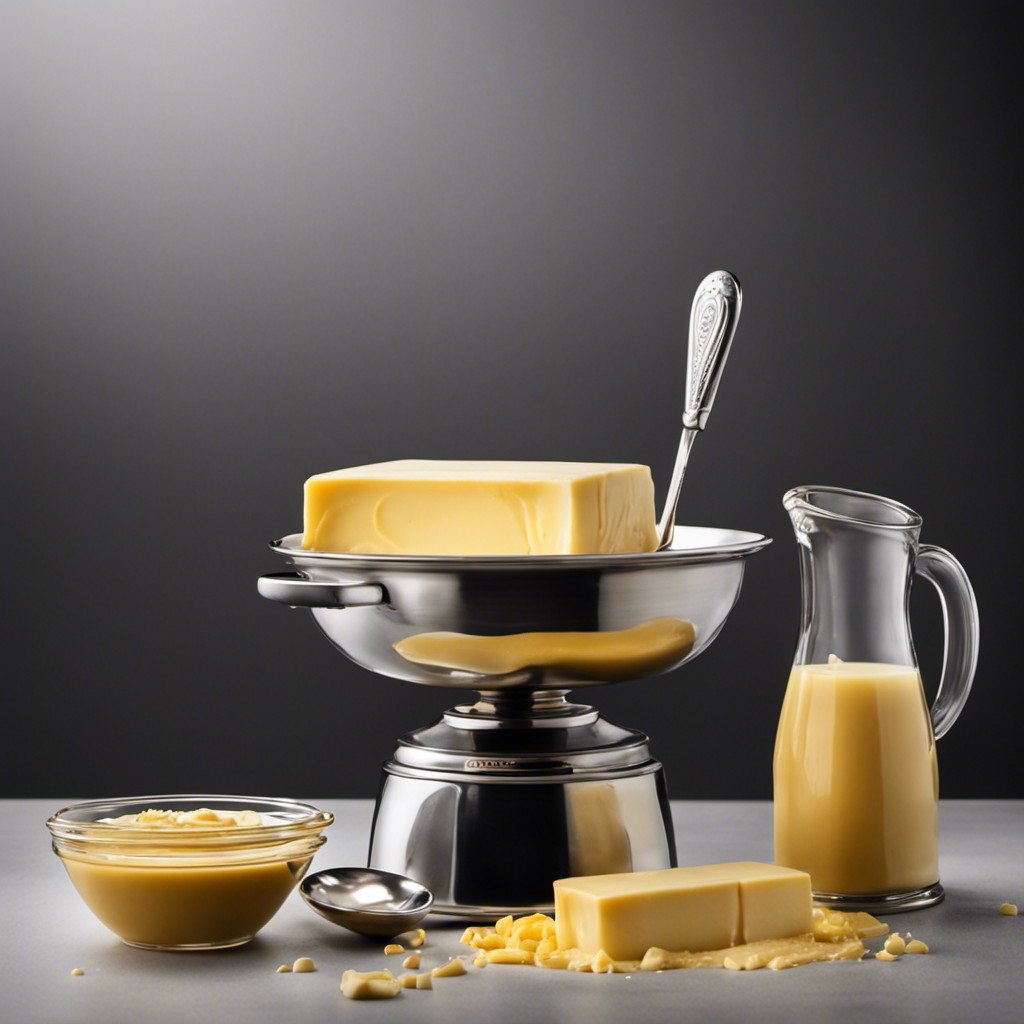
 Butter Tips and Tricks3 months ago
Butter Tips and Tricks3 months agoHow Many Calories Are in a Stick of Butter: A Comprehensive Guide









